Coping with the dark side of coal
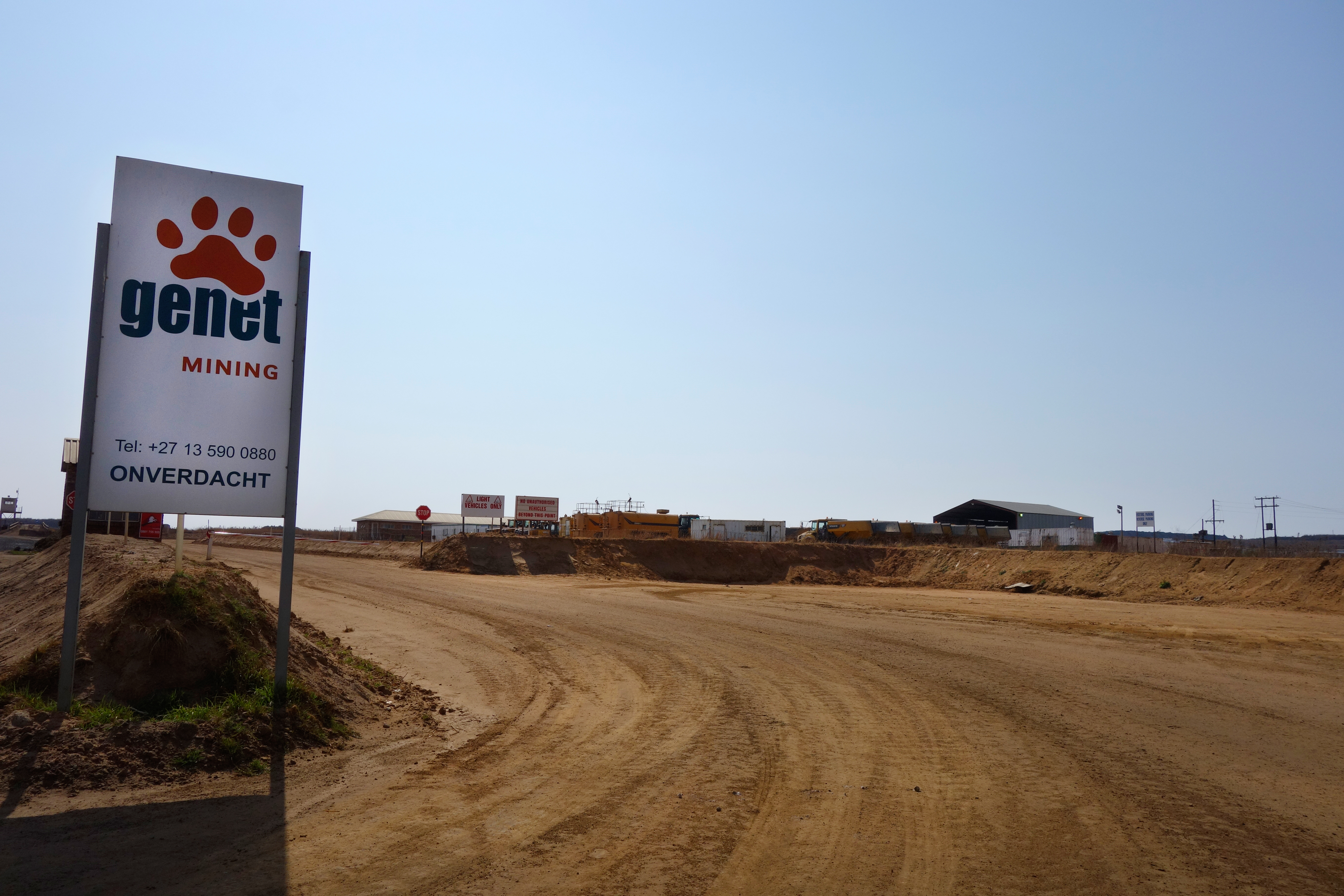
South Africa’s coal mines fuel the country and are a vital export. But all this comes at a cost. On the ground, a picture emerges where individual livelihoods are cheap. Amid government plans to build more plants, swissinfo.ch explores the shady side of this natural resource.
Even without any workday traffic to stir it up, the red dust stings my eyes. But I’m lucky. I can blink a few times – or drive away – and the problem will disappear. Not so for the people living near Belfast in the north-eastern state of Mpumalanga, about 230 kilometres east of Johannesburg.
Maria Mtsweni is a grandmother and homeowner who lives within walking distance of the nearest coal mine. The Onverdacht mine is operated by Genet, a South African mining company which has a contract with Swiss commodities firm Glencore. When the mine opened in 2006, blasting began to access the coal vein.
According to Mtsweni’s lawyer, Koos Pretorius, the blasting was severe enough to cause part of her mud-and-daub house to cave in, leaving a vacant space in her yard where there used to be a room. There are also large cracks in the walls – at some points wide enough to fit a hand. The pro-bono lawyer, who has a cherry farm nearby, helps Mtsweni and her neighbours when he can.
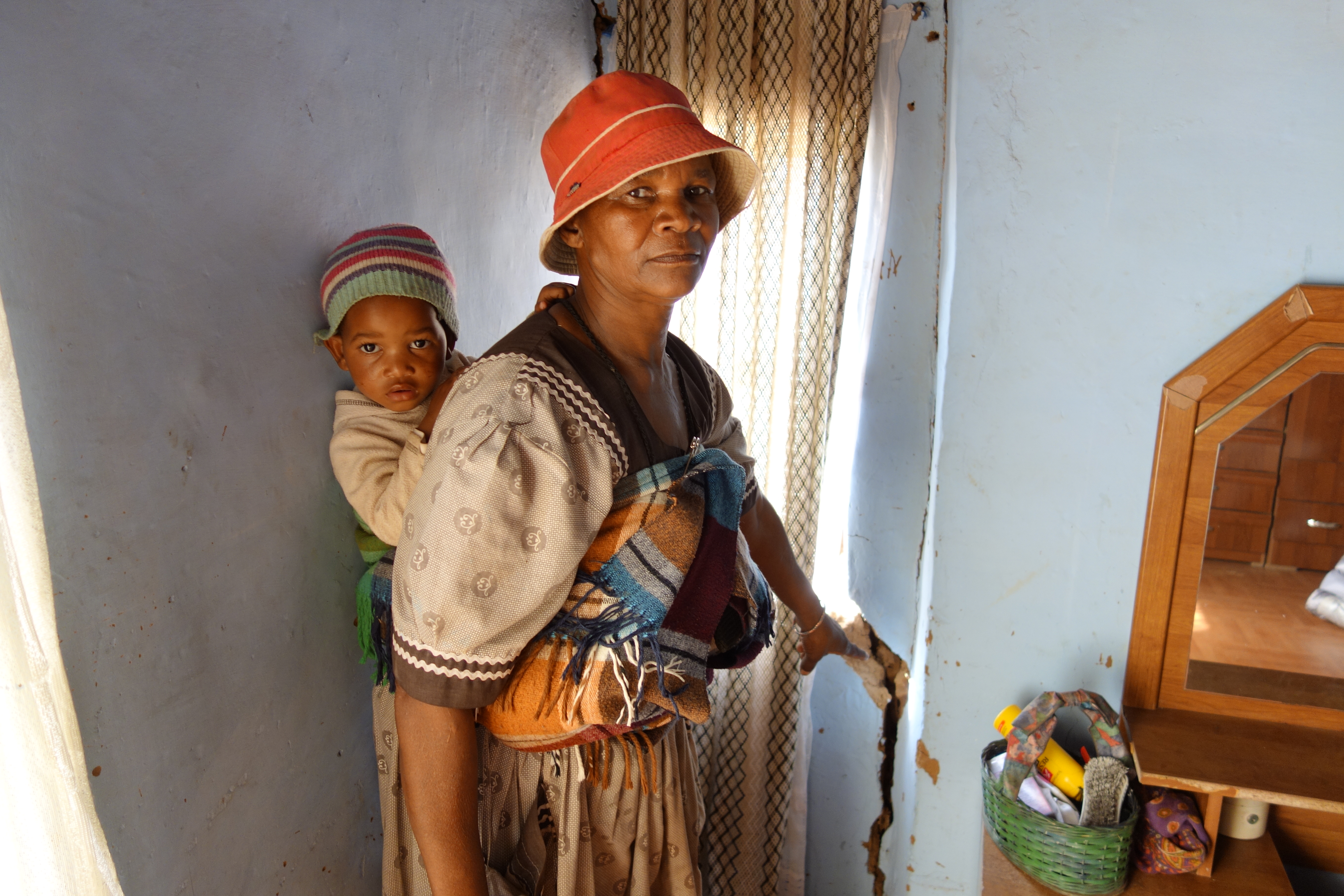
More
‘I don’t have anywhere else to stay’
Asked about the situation by swissinfo.ch, a Glencore spokesperson replied by email, saying evaluations carried out concluded that “blasting from our mine did not contribute to any damage to the property concerned”.
Mtsweni is not satisfied with the company’s offer to fix the damage to her home using chicken mesh and a fresh layer of mud.
Unlike the mine, the office where Mtsweni collects her monthly pension money is not within walking distance. This is a problem during the rainy season, when the road is impassable.
“The trucks hauling the coal ruined the road. It floods during the summer rains, so the school bus can’t pick up the children. And pensioners can’t pick up their monthly payments,” Pretorius told swissinfo.ch.
Coal, hard cash
When swissinfo.ch approached Glencore asking for a tour of a mine or an office visit in South Africa to discuss operations, the company declined.
A trillion-dollar industry, coal is a priority both for those who have it and for those who want it. Access to coal means access to electricity; without power, nations are unable to develop economically or socially. And sometimes, mining companies contribute to local communities by improving their infrastructure – which Glencore says it has, for example, by actually improving the state of the roads, and sponsoring health and education projects.
According to the World Coal Association, coal covers about 30% of the world’s primary energy requirements and generates 41% of its electricity. Coal is also used to produce 70% of the world’s steel.
Each year, some 7,800 million tonnes of coal are mined from the earth. China produces about half of that (3,500 million tonnes), and uses most of it itself. In comparison, South Africa’s mines produce some 260 million tonnes of coal, about a quarter of which it exports. About three-quarters of South Africa’s energy needs are supplied by coal.

The coal industry provides more than seven million jobs worldwide, says the World Coal Association. In South Africa, the coal mines employ more than 65,000 workers, and it is estimated that their total annual wages are worth more than $1 billion (CHF913 million). The association also says that one mining job in South Africa generally feeds and clothes ten people – for example children and elderly relatives.
One of those jobs belongs to Nicholus Mabena, a technician at AngloAmerican’s Goedehoop Colliery, also located in coal-rich Mpumalanga. But when he’s not working, he and lawyer Pretorius try to sort out the challenges facing the extended Mabena family. They’ve had problems in connection with the Optimum coal mine near Middelburg.
Dead cattle, leaky toilets
The trouble began when Optimum asked the Mabenas and their neighbours to relocate in 2009 to make way for a new coal mine. Nicholus Mabena says the relocation itself wasn’t the problem; rather, it was the fact that they couldn’t take their cattle with them to the township of Rockdale. The grazing land offered by the mine was poor, and some 80 animals died of malnutrition as a result, according to a report from a veterinarian employed by the state agricultural department.
After talks in late 2012, Optimum sent the community a letter a few months later saying that it was not responsible for the deaths. However, it offered to compensate the owners for half of the animals – provided that they could prove their ownership – a tricky undertaking since the creatures were long dead. In addition, Optimum proposed that the farmers sell all their live cattle to the mine. This would put an end to the awkward system of granting them “visitation rights” to the grazing site near the mine – but Mabena says it’s a rip-off.
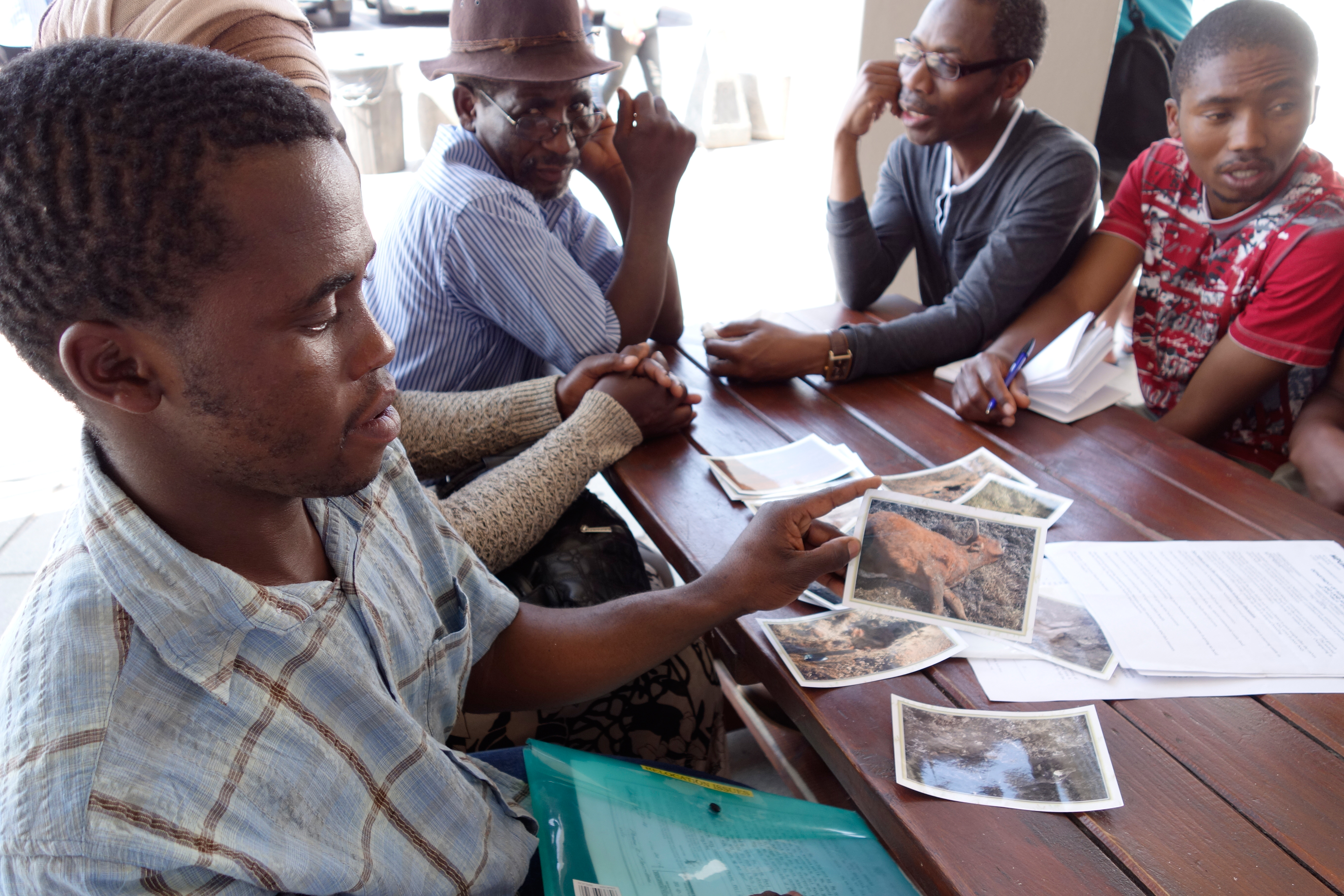
More
‘We need to maintain our assets’
Housing is another issue for the Mabenas. When they moved, the mine provided them with newly-built homes; however, they were not given the deeds to the houses – some of which have issues with the plumbing. For example, some lack hot water, while sometimes the toilets back-up and spew sewage into the bathrooms. Other homes have kitchens that lack cupboards.
Moving away from coal
Coal’s toll on the environment is considerable. Not only does it cause air pollution, raising carbon dioxide levels, but it requires huge quantities of water for processing and mine maintenance. And once the coal has been carted away and the mine abandoned, the problem of acid mine drainage sets in, attest authorities including the United States Environmental Protection Agency and Greenpeace. This is when water contaminated with high levels of salts, sulphate and metals pollutes the surrounding soil and groundwater – pollutants that can sicken both humans and animals, like the Mabena family’s cows.
For these reasons, environmentalists are pushing for more sustainable forms of energy.
“We’re campaigning for an energy revolution in South Africa – a shift away from coal,” Melita Steele of Greenpeace Africa told swissinfo.ch. She pointed out that the government’s plans to build three new coal-fired power plants were not consistent with supposed efforts to move away from coal.
The Department of Energy’s “Integrated Resource Plan” proposes that South Africa’s energy needs be met by a mixture of resources by 2030. The goal is for 42% of the new capacity to come from renewables.
According to Eskom, the national power company, about 72% of South Africa’s energy needs are currently covered by coal. This is unlikely to change any time soon. Worldwide, the World Energy Council estimates that there are about 860,000 million tonnes – or 140 years’ worth – of coal reserves. In South Africa, the figure is 30,000 million tonnes – or as some have estimated, 200 years.
Steele acknowledges the importance of a stable power supply: “The rolling blackouts had a huge impact on our [South Africa’s] economy.” But as environmentalists like herself point out, more needs to be invested to ensure that coal-fired power plants are equipped with carbon-capturing equipment to reduce CO2 emissions.
Nowhere to go
Electricity isn’t such a worry for Sprinkaan Masango, an illiterate farm worker struggling to support his extended family, which includes schoolchildren, an ageing mother and unemployed brothers. To do that, he has to keep his 48 cows, sheep and goats in good health.
A mine with ties to Glencore illegally bought the land where Masango has been living since the 1980s, according to Masango’s legal counsel. As a result, now there are too many people and animals crowded into a small area – making pastureland and water scarce. It looks like he’ll have to reduce the size of the herd he’s worked to build up over the years.
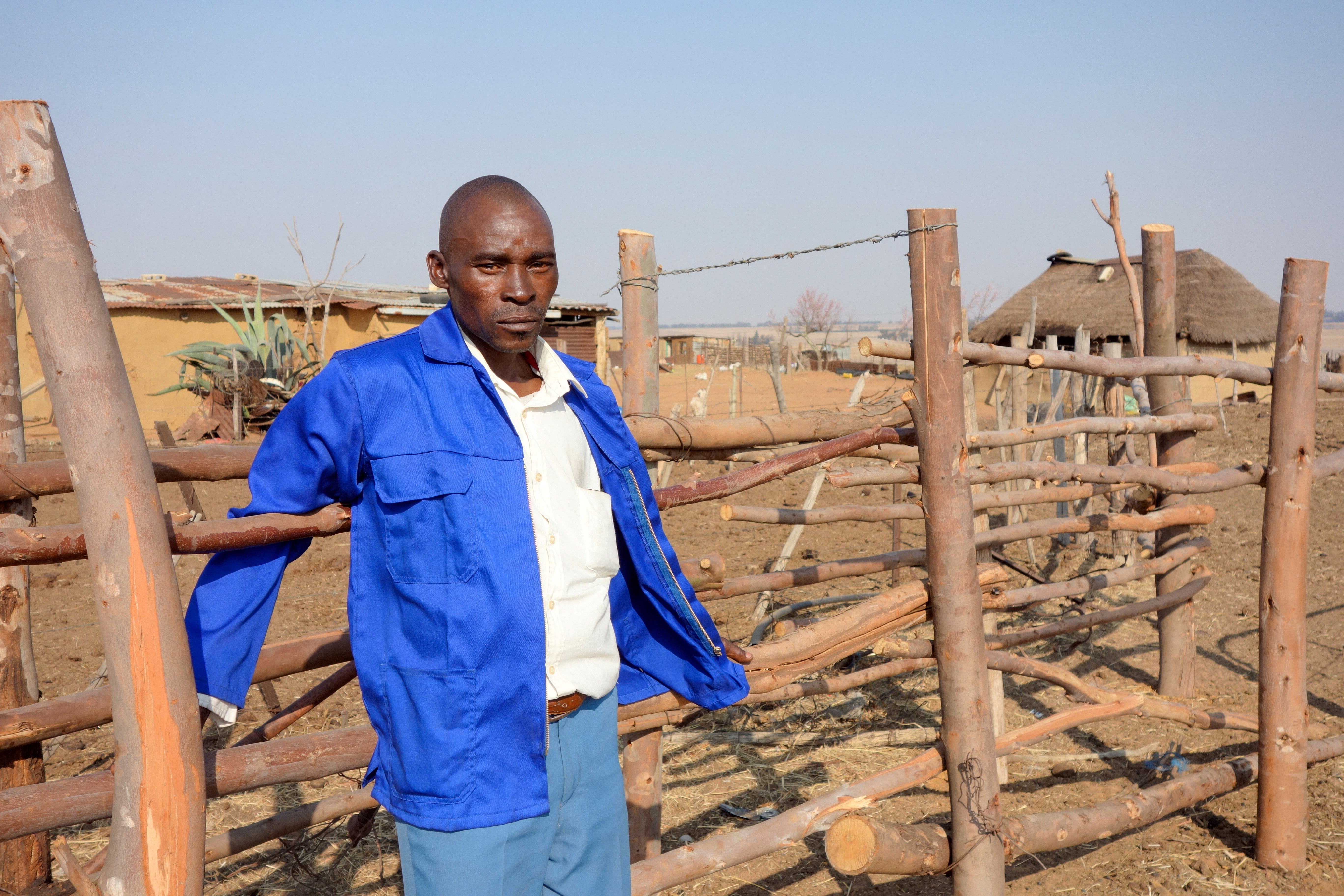
More
‘I resent the mine’
Despite the seemingly hopeless situation, Masango seems prepared to fight for his right to eke out a living on the wildfire-scarred land. His refusal to back down has cost him, though. While the mine gave neighbouring farmers free hay to feed their livestock, Masango was excluded as “punishment” for refusing to move.
Still, the man has dreams. For example, he’d like to build a brick house for his family on the land where he’s lived for three decades. But he doesn’t dare because his future is so unclear.
A project funded in part by the Swiss Secretariat for Economic Affairs has been helping South African firms to become more energy efficient. Established in 2010, the Industrial Energy Efficiency Project offers free assessments to companies interested in cutting their energy costs. It also provides inexpensive training on the topic.
So far, the project has saved some 268,000,000 kwh of electricity and nearly 250,000 tonnes in carbon dioxide emissions. Considering the rising cost of power in South Africa, the project is a boon for the BRICS nation in its effort to be competitive. The project is scheduled to run until March 2014.
Meanwhile, a delegation travelling with Swiss Economics Minister Johann Schneider-Ammann recently sought opportunities for Swiss firms to become active in South Africa – in the energy sector, for example.
Daniel Küng, the CEO of Switzerland Global Enterprise, told swissinfo.ch that energy was a particularly promising sector for Swiss firms to get a foothold in – but not extraction or minery.
“I think that these are industries which have a heavy stance at the moment, be it for overcapacity, lack of raw materials or just because they are in an environment that needs regulatory change,” Küng said.

In compliance with the JTI standards
More: SWI swissinfo.ch certified by the Journalism Trust Initiative











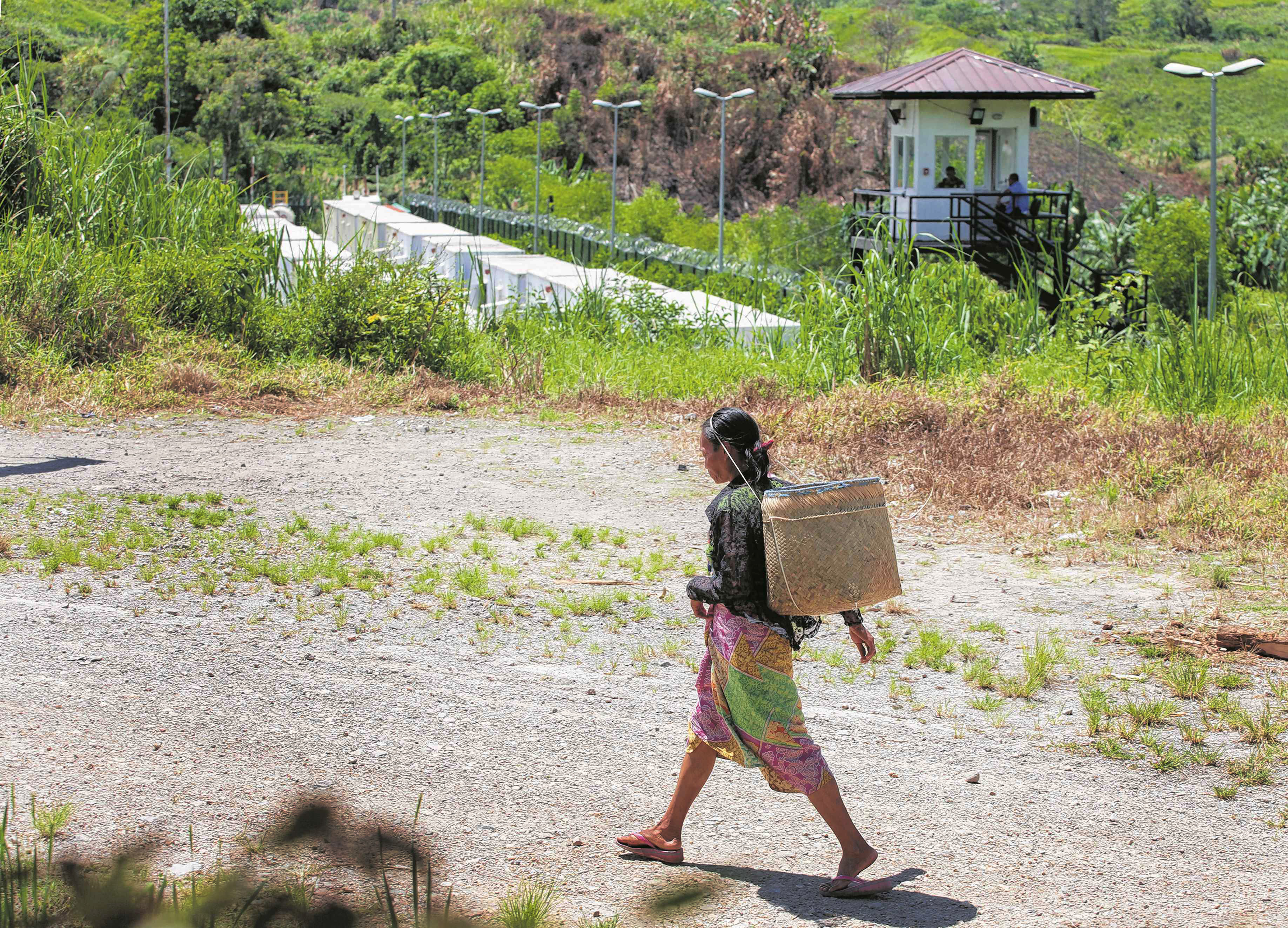
You can find an overview of ongoing debates with our journalists here . Please join us!
If you want to start a conversation about a topic raised in this article or want to report factual errors, email us at english@swissinfo.ch.